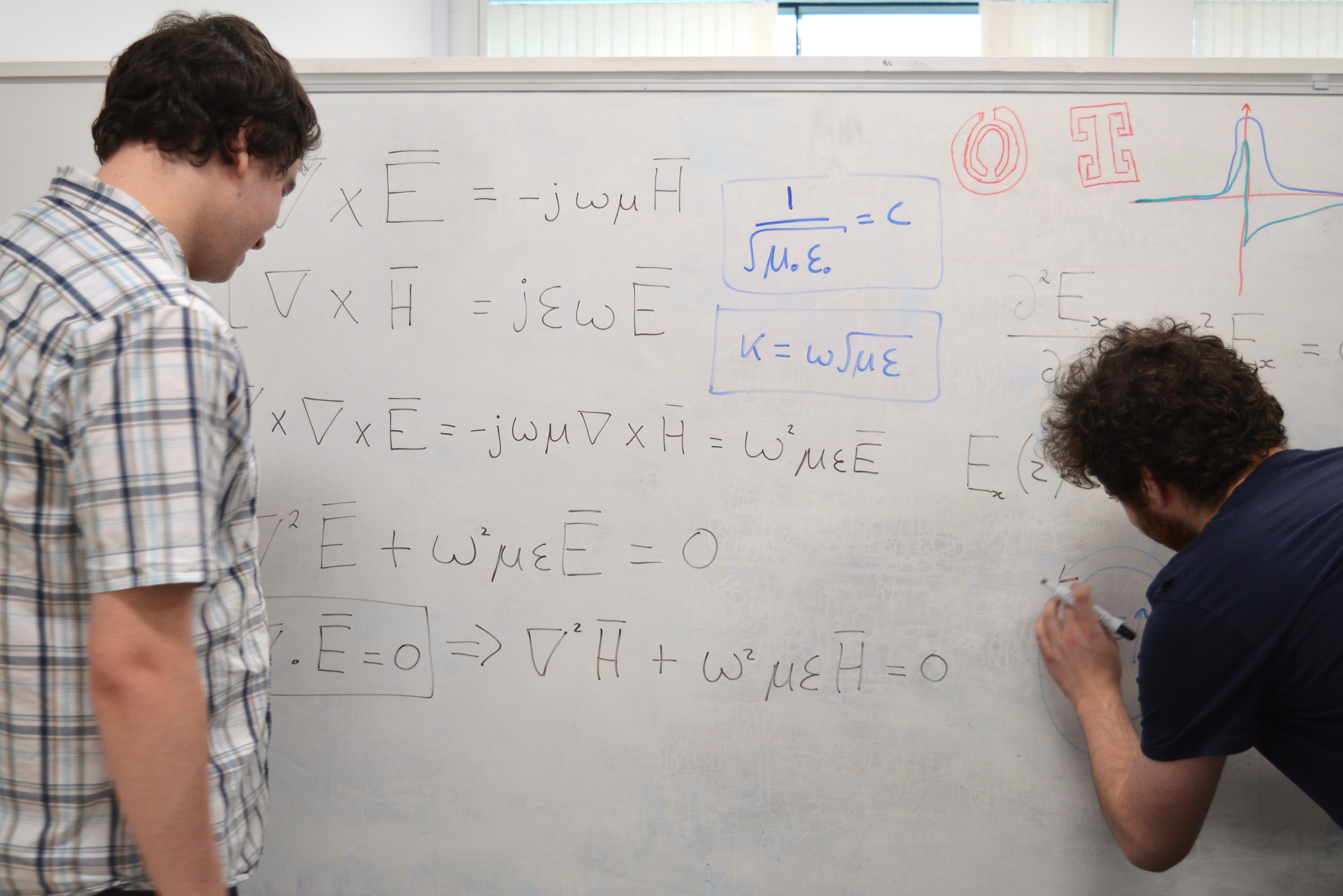Theory, Design and Modelling
Our research
Fundamental Theory
Metamaterials provide a pathway to properties that are not possible in nature, such as the famous examples of invisibility cloaking, negative refractive indices and achromatic metalens, but surpassing the previously established laws of physics requires the creation of new theoretical frameworks. For this reason, the development of fundamental theory and utilisation of various modelling technique that can inform new research directions and understand exciting new experimental results is crucial.
Our research
Within the CMRI, we take a holistic approach in using theoretical methods to complement computational and experimental techniques to advance understanding of these systems. As a result, CMRI is home to theoreticians working across a range of metamaterial topics such as:
- the theory of space-time varying metamaterials,
- uncovering exotic electronic and optical properties in novel 2D Weyl metasurfaces, twisted Morie metasurfaces and metasurfaces based on bound states in the continuum
- the theory of optical quantum metasurfaces for quantum source generation and quantum state manipulation,
- the theory of topological physics, non-Hermitian physics (PT symmetry) for novel metamaterial design.
Metamaterial Design
The dependence of metamaterial properties on the shape and ensemble arrangement of individual sub-wavelength elements (such as 'meta-atoms') ensures that the precise design of metamaterial structures is key for the development of practical devices. As such, numerical and analytical methods for metamaterial design are embedded in the CMRI, with a suite of tools being deployed to tailor electromagnetic, mechanical and thermal properties. We have a strong background in industry problem-solving with CMRI researchers providing fit-to-purpose solutions for challenges faced by our partners such as:
- lightweight and conformal antennas for telecommunications,
-
metasurfaces for novel beamsteering and beamshaping applications,
- electromagnetic and acoustic absorption,
- shielding devices from electromagnetic interference,
- and metamaterials for better renewable technologies such as
- solar cells,
- batteries,
- photocatalysis,
- and thermoelectrics.
Numerical Modelling
The functionality of metamaterials is achieved and driven by the precise control of the individual elements’ size, shape, geometry, orientation and periodicity in the composite or patterned structure. The design of practicable and functional metamaterial for a targeted application require fundamental understanding of the response of the metamaterial and device to excitations spanning a wide range of frequencies and operating conditions. Patterned structures can also involve different types of materials and interfaces and their operation involve the interaction between complex physical phenomena at different length scales (for example, electromagnetic, acoustic, thermal, kinetic and magnetic).
Numerical models provide a powerful and invaluable tool to design, analyse and evaluate the performance of functional metamaterials and guide the fabrication process. Numerical models alleviate the limitations imposed by analytical theories and enable the modelling complex metamaterial structures and devices at different operating wavelengths and conditions, and provide wealth of information on local and overall performance of the metamaterial and system or device respectively.
Our research
- using micromagnetic numerical models to study the high-frequency susceptibility in metamaterials with core-shell magnetic particles in electromagnetic absorbers;
- using multiphysics models that incorporate electromagnetic wave transmission, heat diffusion and reaction rate dynamics to design reconfigurable photonic metasurfaces and devices for neuromorphic computing.
With such a broad scope of topics, we use a variety of technical software packages to aid theory, design and modelling of different thermal, electromagnetic, mechanical and acoustic properties, which include:
- Ansys HFSS,
- ARTEMIS (using ab initio calculations for identifying favourable interfaces)
- COMSOL Multiphysics,
- MATLAB,
- MaxLLG (a 3D electromagnetics solver for high frequency magnetics),
- Python,
- RAFFLE,
- and Wolfram Mathematica.
Our researchers in this area include:
 |
 |
 |
| Dr Changxu Liu | Prof Feodor Ogrin | Dr Gregory Chaplain |
 |
 |
 |
| Dr Ian Hooper | Dr Simon Horsley | Dr Steve Hepplestone |


.gif)



